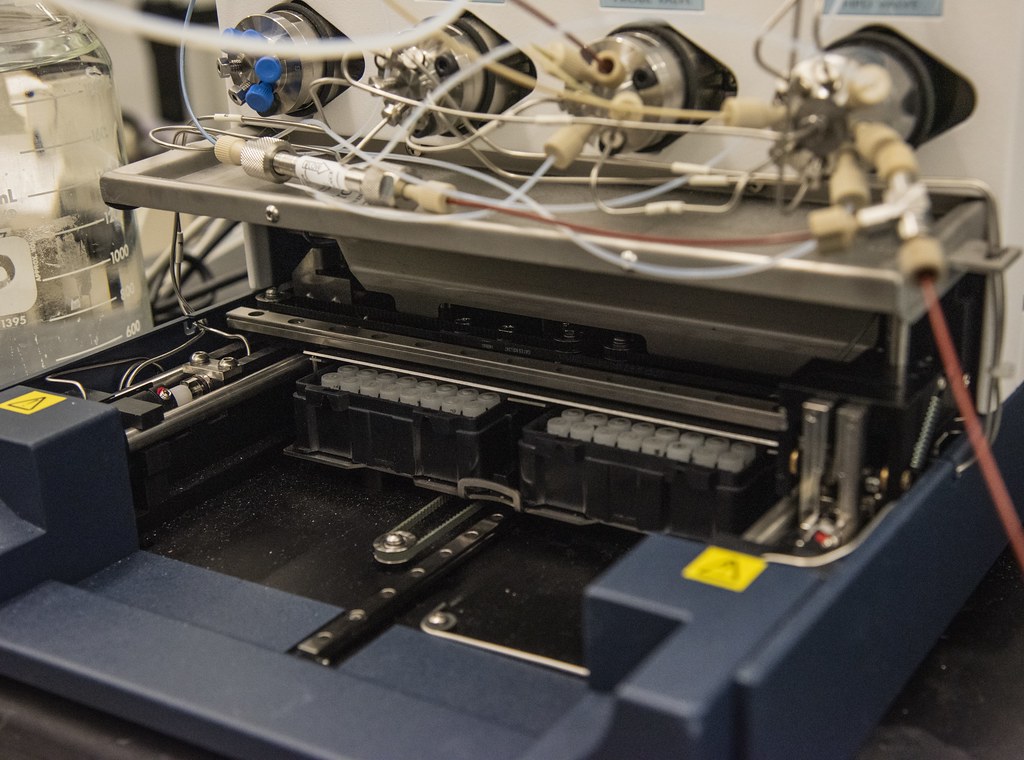By Sarah Rubinstein | Bond LSC
Whether growing plants in his garden or experimenting with moon dust, Joe Lynch is on the lookout for his next DIY project.
As one of the newest principal investigators at Bond LSC and a MizzouForward hire, the plant biochemist brings a curiosity as he embarks on a new chapter at Mizzou. He is eager to dive deep into understanding how plants use aromatic amino acids to survive and thrive in diverse environments.
“The big picture I’m trying to get at is how plants work to be able to sustain production of all these specialized metabolites,” he said.
Mizzou was on his radar after connecting at a conference with Craig Schenck, an assistant professor of ag biochemistry. Together, they put forward a proposal to NASA to study how plants respond to growing in moon dust.
“It’s something I’m particularly excited about, just the coolness factor of figuring out how plants might react to growing on another world to help be a part of human exploration,” he said.
Lynch was recruited as part of the MizzouForward initiative, which aims to strengthen innovation in the research field to elevate Mizzou as one of the top research universities in the country. Its goal is to hire 150 new faculty members by 2026. Researchers focus on one of six priority areas and meet criteria such as obtaining national awards or honors and a record of published science.
One of the biggest draws for Lynch was Mizzou’s Interdisciplinary Plant Group (IPG), a collaborative program that connects plant researchers across campus.
“There’s a clear opportunity for networking and a structure in place to bring people together who might otherwise not meet,” he said.
Lynch’s fascination with plants began in childhood and eventually led him to earn a Ph.D. in molecular plant sciences at Washington State University. It was there he discovered his research niche: studying how plants manage complex metabolic processes across different cellular compartments. His postdoctoral work at Purdue University then pushed him toward his current focus — the metabolism of aromatic amino acids in plants. After running his own lab at West Virginia University for three years, Lynch’s interest was piqued by the opportunities at Mizzou, and he’s excited for how new collaborations might expand his work on amino acid metabolites.
The goal in this work is to help create better baseline knowledge that people can leverage to make better plants or better understand how they grow. For example, he said his information could help breeding programs understand what genetic factors underlie qualities that could attract pollinators better or repress herbivores better. He also believes that his work can help develop genetically engineered plants that bridge the gap between sustainability and economic viability.
At Mizzou, he plans to continue the work he started in West Virginia, taking the next steps toward practical applications of plant metabolic networks.
“I want to further explore not just the fundamentals of how plants work, but also explore how we can convert this into a usable end product that will directly impact people’s lives,” he said.
Lynch is also excited to mentor students and help launch their scientific careers.
“I’m put in a position where I’m going to be a key part of their story as they develop as scientists and as people go on to do absolutely awesome things of their own, which ultimately is the most fun part,” he said.
As Lynch plans out his new garden in Columbia, he’s ready to continue his research and work alongside a new generation of plant scientists.
MizzouForward is a transformative, $1.5 billion long-term investment strategy in the continued research excellence of the University of Missouri. Over 10 years, MizzouForward will use existing and new resources to recruit up to 150 new tenure and tenure-track faculty to address some of society’s greatest challenges. Investments also will enhance staff to support the research mission, build and upgrade research facilities and instruments, augment support for student academic success, and retain faculty and staff through additional salary support.

















